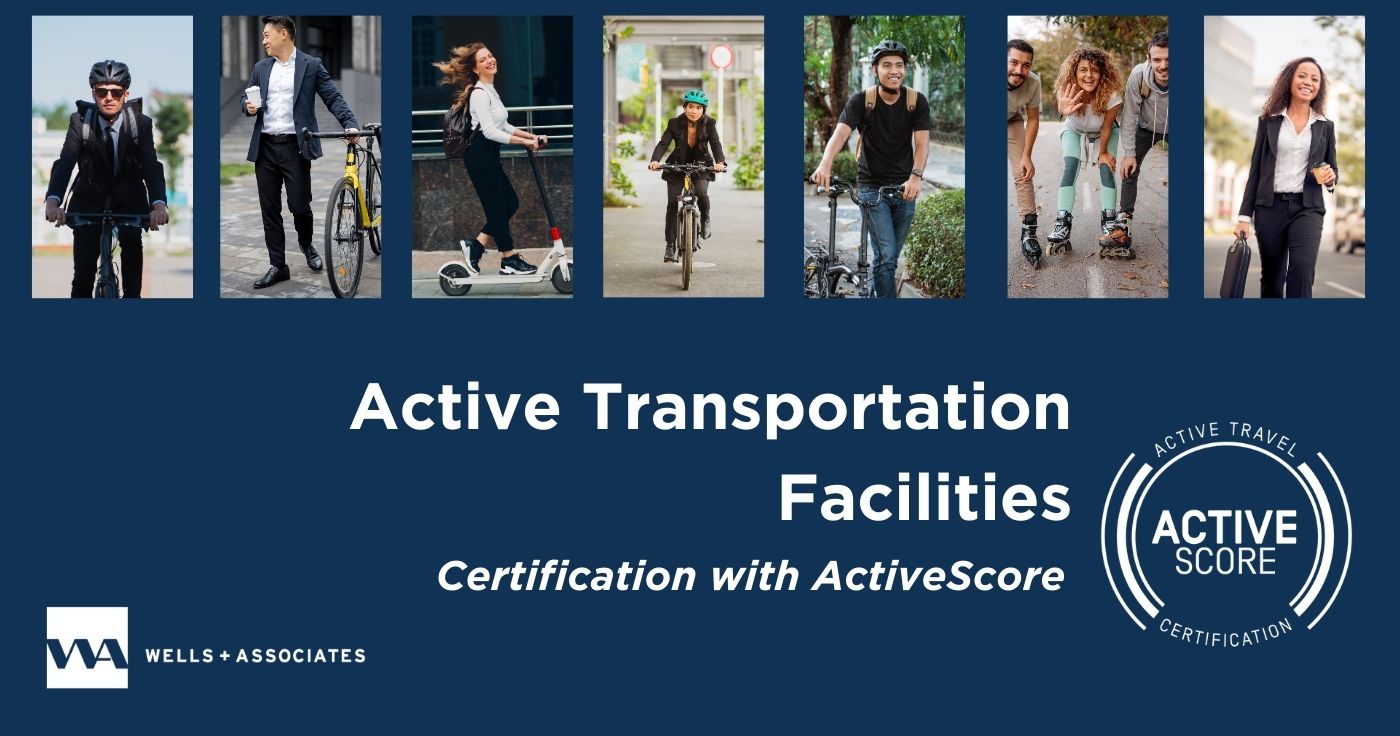Office, residential, retail, hotel, and mixed-use developments face increased competition for tenants and customers. Improving “active transportation” facilities and networks – notably, biking, walking, running, and rolling – can help buildings gain a competitive advantage in today’s real estate market.
One thing that can set properties apart from the competition is a tangible measurement and assessment of their active transportation facilities and facilities.
Pioneered in Europe, the ActiveScore system assesses and certifies buildings’ active transportation networks and facilities and enables owners and managers to improve the marketability of their properties by helping buildings create the infrastructure and services that support and inspire “active transportation.”
Why is active transportation important? Consider that:
- 82% of commuters surveyed reported being less stressed after riding to work,
- Active commuters take 1.3 fewer sick days per year on average than non-active commuters,
- Across 430 ActiveScore-certified projects, 12,815 tons of potential CO2 emissions have been saved,
- Adults participating in daily physical activity have a 30% lower risk of depression.
While the above statistics outline benefits for tenants and commuters, improved active transportation facilities and amenities also provide benefits to property owners, including the ability to:
- Drive up rental value
- Future-proof real-estate assets
- Attract and retain tenants
- Increase building value
- Maximize ROI on active transportation infrastructure
The Five Elements of an ActiveScore Rating
Five key elements are evaluated as part of an ActiveScore rating:
- Active transportation parking/storage: Is the location where active transportation elements are stored secure, convenient, and accessible?
- Infrastructure: Are there a variety of active transportation storage facility sizes for different needs? Is access, routes, and wayfinding prioritized for active transportation modes? Are security cameras and/or lighting installed to ensure active transportation users feel safe? Is the look and feel of active transportation facilities on the property inviting?
- Facilities: Does the property have lockers, storage, showers, and/or changing rooms and amenities?
- Services: Does the property have a maintenance and repair station, shared bikes/scooters, and/or occupier engagement services?
- Planning and promotions: Does the property provide active transportation information, communication, and/or community-building efforts?
How do You Acquire ActiveScore Certification at Your Property?
ActiveScore Accredited Professionals (APs) advise properties on what constitutes a best-in-class building in terms of active transportation. An AP helps ensure that all the necessary infrastructure and tenant engagement services are in place for future-proof assets that inspire and support active transportation.
Wells + Associates’ mobility management experts are ActiveScore Accredited Professionals (APs). As long-term practitioners of mobility management and Transportation Demand Management (TDM) programs, these APs are experienced in developing active transportation in the built environment and have helped dozens of buildings, properties, companies, and communities improve active transportation facilities and amenities across the United States.
Contact the W+A ActiveScore AP team today to review your building, get a cycle-friendly rating, and receive suggestions to improve your building’s rating.

